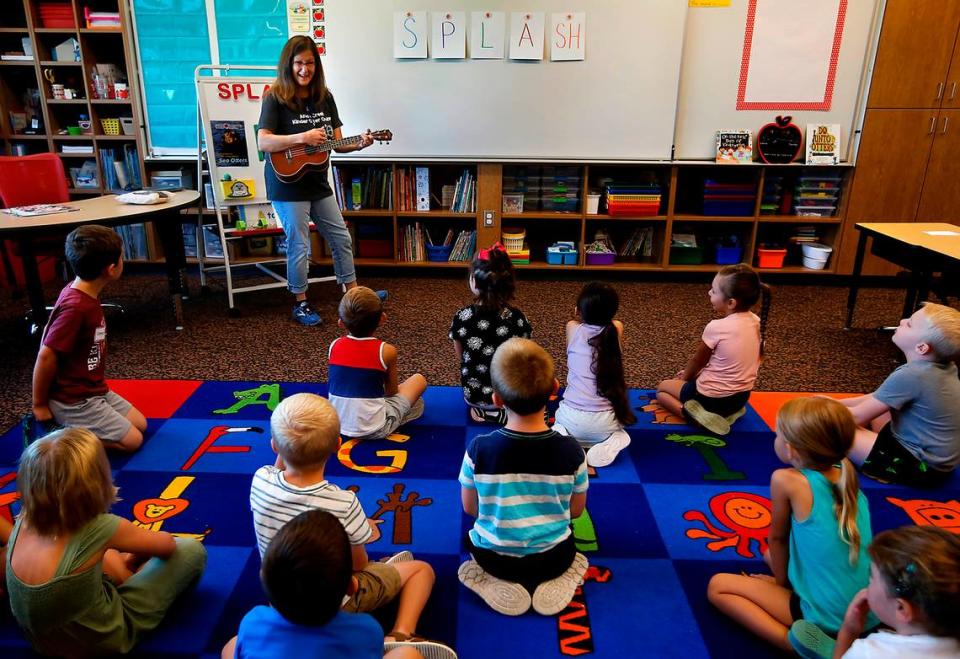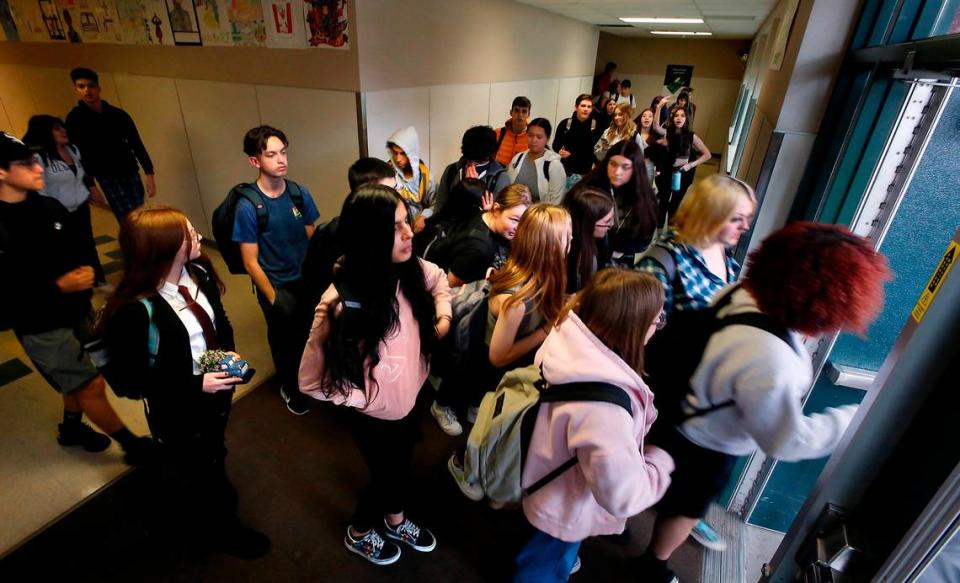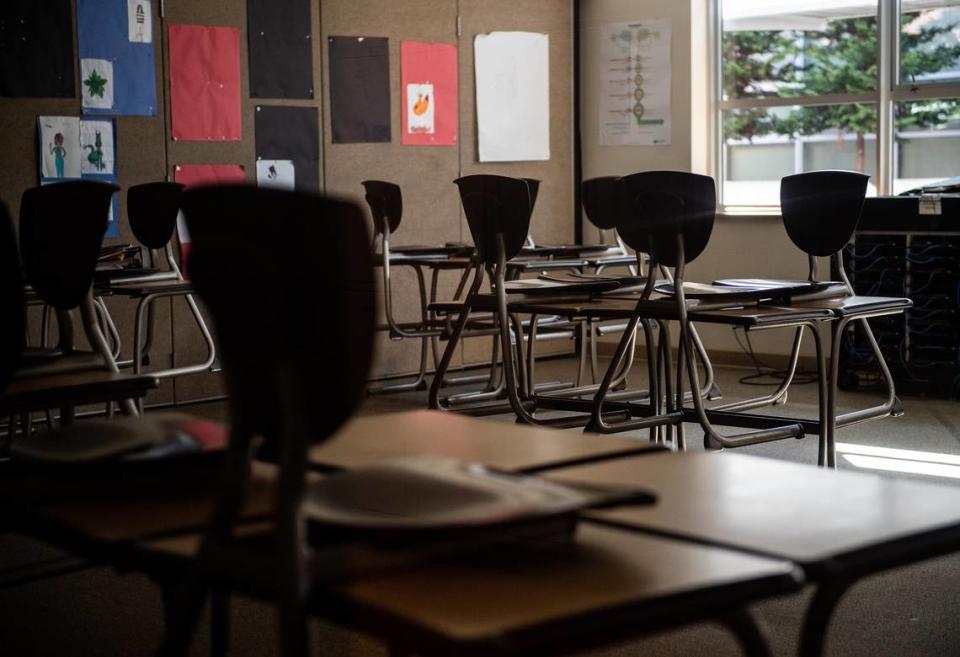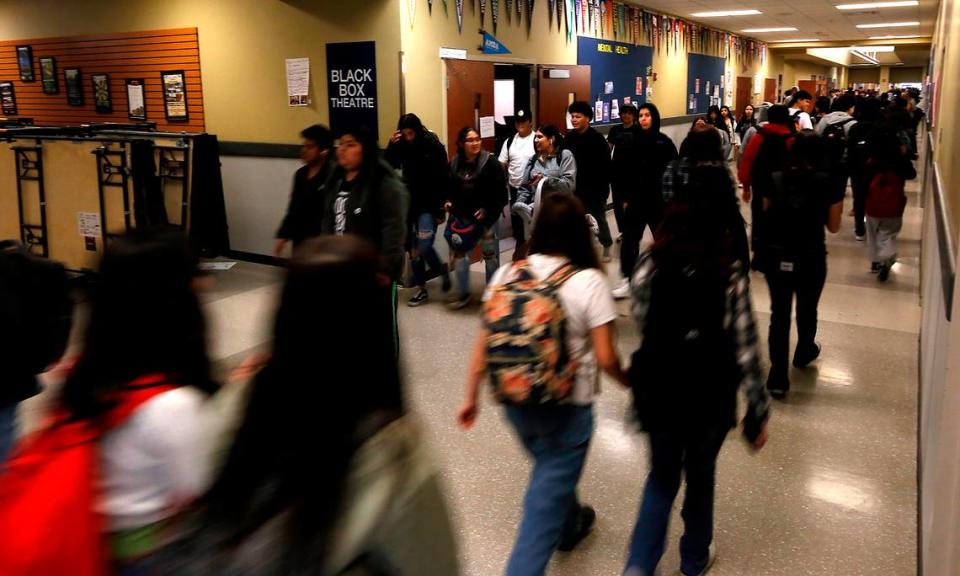1 in 3 Tri-Cities students chronically absent. Why are our schools doing worse than many?
Tri-City school districts are struggling to get students to attend class on a regular basis, and it could have lasting consequences for both the schools and the students.
Nearly 16,000 Tri-Cities students were chronically absent from school during the 2022-23 school year. That’s a population larger than many of the region’s mid-sized school districts.
The figure makes up nearly one in every three students enrolled in class in the Kennewick, Pasco and Richland school districts.
The data was published this year by the Washington Office of Superintendent of Public Instruction (OSPI) and provides the first clear picture of student attendance since the COVID-19 pandemic disrupted in-person learning and regular attendance practices.
Research shows regular attendance is a crucial factor in student achievement.
The National Center for Education Statistics shows students who attend regularly have been shown to achieve at higher levels than students who do not. Simply put, days spent away from class mean less learning opportunities.
In high school, attendance is a key indicator of how likely a student is to graduate.
It’s especially important for kindergarten students, who build a knowledge base of skills they’ll use to learn for years to come.
The chronic absenteeism rate in the Tri-Cities is more than 2.5-times higher than it was when compared with 2018-19, the last full school year with reliable data prior to the pandemic.
And chronic absenteeism rates in the Tri-Cities remain higher than state and national averages.
Here’s a breakdown of last year’s data, showing how many students in each school district weren’t in regular attendance:
Pasco School District: 36%, or nearly 6,700 students
Kennewick School District: 30%, or nearly 5,700 students
Richland School District: 25%, or about 3,500 students

Why students miss school
While many school districts — including Richland — saw year-over-year increases in attendance last year, rates haven’t begun to recover in Kennewick and Pasco. It’s unclear why.
Specialists working with students say there’s no one dominant reason why Tri-City students aren’t attending class as regularly as they used to, but systemic hurdles made worse because of the pandemic — including, for example, rising mental health issues and transportation challenges — remain a major contributing factor.
“Every student and family’s situation is so unique to them,” said Amber Gonzalez, associate director of Communities in Schools Benton-Franklin.
Her organization has 31 full-time student support coordinators working in 33 schools around Prosser, Kennewick, Richland, Pasco and Finley.
Those workers address attendance and behavioral challenges for schools and individual students using an evidence-based model that’s tailor made for each scenario.
Gonzalez said students are struggling with behavioral norms and regular attendance routines. Anxieties with grades, social interactions with peers and teachers, and sickness are also influencing students to ditch school more often.
The rising cost of living and struggles caused by unstable housing also are affecting students, Gonzalez said.
“We’ve had some older students who have been helping with bills, have been getting jobs and helping their families with child care,” she said.

Washington students are considered chronically absent when they miss 10% — about 18 days — or more of the 180-day school year.
Regular attendance is defined by OSPI as having, on average, less than two absences per month, regardless of if they were excused or unexcused. And an absence is defined as missing at least half the school day.
Truancy is a narrower definition of absenteeism. It specifically measures days when students missed schools and recorded an unexcused absence.
OSPI’s data includes all students enrolled for at least 90 days throughout the school year.
Schools across the U.S. have been grappling with record-low attendance.
More than a quarter of the 49 million U.S. public school students missed 18 or more school days during the 2021-22 school year, making them chronically absent, according to The Associated Press. That number was at just 15% prior to the pandemic.
Absenteeism and truancy rates have historically been highest among students who are homeless, come from low-income families or who are in the foster care system.
How Tri-City schools are helping
OSPI and school districts across Washington are mounting a full-court press to re-engage students after the COVID pandemic.
Tri-City school districts have said recently that addressing the rise in absenteeism rates is among their top priorities.
“Studies indicate that the pandemic has profoundly impacted the health and well-being of our students,” Pasco Superintendent Michelle Whitney said in a statement.
“Changes in learning environments, health concerns and various disruptions have contributed to a rise in absenteeism. We acknowledge that absenteeism can impact academic progress, social connections and overall student success,” she continued.
Pasco, which has the highest rate of irregular attendance in the Tri-Cities, is addressing the issue through a “multi-faceted approach” that includes creating supportive environments, supporting mental health resources including tele-therapy sessions, offering flexible learning options, increasing engagement with parents and keeping a closer eye on attendance.

School districts, including Richland and Kennewick, share many of the same early-intervention strategies used to catch students before their attendance gets worse, including notifying parents when their student has an unexcused absence.
Teachers, school counselors and building administrators also regularly work with students and families to address barriers and root causes of bad attendance.
“The key to breaking the pattern of chronic absenteeism is working closely with the student’s family,” said Shawna Dinh, Richland School District’s public information officer.
For the past few years, OSPI has been funding regional teams to support student attendance and engagement with pandemic funds called the Elementary and Secondary School Emergency Relief (ESSER).
The teams scour attendance rates, grades and other data points to identity students who may be struggling, and then meet with them to find ways to resolve whatever challenges they may be facing to attend regularly.
“The project has been pretty successful so far,” Katy Payne, OSPI executive director of communications, said in a statement.
A bill introduced this past legislative session would have continued funding for the program, but it failed to pass or receive any money in the state’s supplemental budget. States and school districts have until the end of September to spend the rest of their ESSER money.
“We are likely to make another request next year, but in the meantime we are continuing to provide professional development and technical assistance to districts across the state to learn how to build these early warning data systems and support their students and families to stay engaged in school,” Payne said.
Malorie Kahl’s position is one that’s funded under OSPI’s attendance and re-engagement project.
She works as a regional engagement and attendance coordinator with Educational Service District 123, serving in-school specialists and counselors in Southeast Washington school districts from Prosser to Clarkston.
Although her program is ending, Kahl said she’s optimistic that school districts and communities will rise to the occasion to reduce student absenteeism in the coming years.
“We’re in the first full year back without any restrictions. There’s a lot we can learn about this year,” she said. “Just figuring out what motivates students, learning about how we can be engaging is something that I believe all schools are grappling with a little bit.”
Kahl said one motivator that keeps students across all demographics in school is a simple one: Positive interactions with adults and their peers.

Changes in addressing truancy
K-12 education is the “paramount duty” of the state, according to the Washington Constitution, and children have a guaranteed right to public education. With few exceptions, children between 8 and 17 are legally required to attend school.
Several days of unexcused absences can lead to serious legal proceedings, according to the Washington ACLU.
Schools can file truancy petitions against parents if their student have seven days of unexcused absences in a month or 15 unexcused absences in a year.
If a court finds the parent violated rights guaranteed to the student under the state’s Becca Bill, they can be fined up to $25 for each day the student is absent without an excuse.
But piling absences rarely lead to that. In most cases, after seven unexcused absences, parents and teachers schedule a conference to identify the reason for the student’s low attendance and establish a plan.
Schools offer academic help, credit retrieval opportunities, bilingual instruction, counseling, family therapy or 504 plans to help students get back on track.
If a student continues to miss classes, Tri-City schools then reach out to the Benton-Franklin Juvenile Justice Center to send a truancy officer out to conduct a home visit.
Escalating truancy can result in a petition and a subsequent hearing between the Community Engagement Board, parent and student. During these hearings, families are given information about attendance laws and discuss their reasons for non-attendance and the team works to help the youth and family develop an education success plan.
Since 2016, state laws and approaches toward truancy have shifted from a primarily punitive model to a support-driven model. That includes changes to state law that went into affect in 2021 striking a juvenile detention requirement for students who miss classes.
As a result of the shift, and because of the pandemic, Tri-City schools have been filing fewer and fewer truancy petitions to bring families in front of juvenile court. Figures provided by Benton-Franklin Juvenile Court Administrator David Wheeler support that.
During the 2018-19 school year, a total 713 petitions were filed with the Juvenile Justice Center.
In 2020-21, during the height of COVID, that number dipped down to a record low 41.
With less than three months left in this school year, only 103 petitions have been filed.

